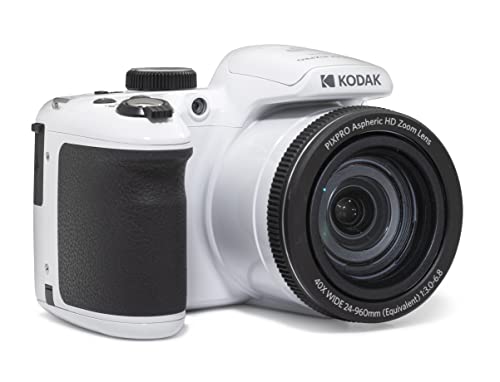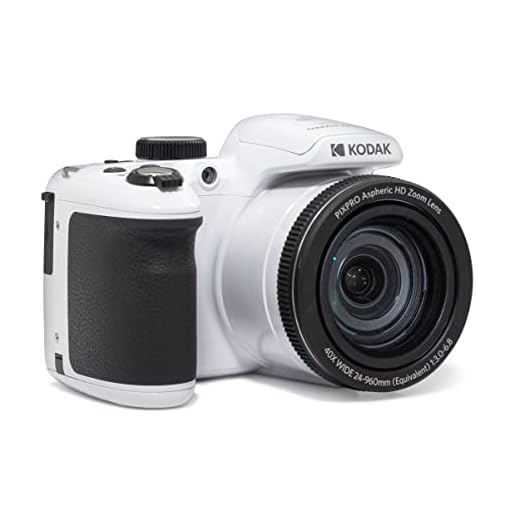


Zoom motors are a critical component in digital cameras that allow users to adjust the focal length of the lens for capturing close-up or distant images. These motors require a specific voltage to operate efficiently and smoothly, ensuring precise control over the zoom function.
When it comes to the voltage requirements of zoom motors in digital cameras, it is essential to understand the technical specifications of the camera model. Different camera manufacturers may use varying voltage levels for their zoom motors, depending on the design and performance requirements of the camera.
Knowing the voltage rating of the zoom motor is crucial for photographers and camera enthusiasts who may need to replace or repair the motor in case of malfunction. Understanding the voltage specifications can help ensure compatibility and prevent damage to the camera’s internal components.
What Voltage is the Zoom Motor on a Digital Camera
When it comes to digital cameras, the voltage requirement for the zoom motor can vary depending on the make and model of the camera. However, most digital cameras typically operate on voltages ranging from 3.3V to 6V.
It is important to note that the specific voltage required for the zoom motor will be specified by the manufacturer in the camera’s technical specifications. Using the incorrect voltage can potentially damage the motor and other components of the camera.
Understanding the Zoom Motor
The zoom motor in a digital camera is responsible for adjusting the focal length of the lens to change the magnification of the image. It is an essential component that allows users to zoom in and out while capturing photos or videos. The voltage required for the zoom motor varies depending on the camera model and manufacturer.
Typically, the voltage for the zoom motor in a digital camera ranges from 3V to 6V. This voltage is crucial for the proper functioning of the motor and ensuring smooth zooming operations. It is important to use the correct voltage to prevent damage to the motor and other components of the camera.
| Zoom Motor Voltage Range: | 3V – 6V |
|---|---|
| Function: | Adjusts focal length for zooming |
| Importance: | Ensures smooth zoom operations |
Importance of Voltage
Voltage is a crucial factor in determining the performance and functionality of electronic devices, including digital cameras. The voltage supplied to components such as the zoom motor directly impacts their operation and efficiency.
A specific voltage level is required to ensure that the zoom motor functions optimally, allowing for smooth zooming and precise control. Deviating from the recommended voltage can lead to malfunctions, reduced performance, or even permanent damage to the motor and other components.
Optimal Voltage
Manufacturers carefully design digital cameras to operate within a specific voltage range to ensure reliable performance. It is essential to adhere to these voltage specifications to maintain the longevity and functionality of the camera’s components, including the zoom motor.
Factors Affecting Voltage
When it comes to the voltage of a zoom motor on a digital camera, there are several factors that can affect it:
- Battery Type: The type of battery used in the camera can affect the voltage supplied to the zoom motor. Different batteries have different voltage outputs.
- Efficiency of the Motor: The efficiency of the zoom motor itself can impact the voltage required to operate it. A more efficient motor may require less voltage.
- Camera Design: The design of the camera and how the zoom motor is integrated into it can also influence the voltage needed for operation.
- Power Saving Features: Some cameras may have power-saving features that adjust the voltage supplied to the zoom motor based on usage to conserve battery life.
Choosing the Right Voltage
When selecting the voltage for a zoom motor on a digital camera, it is important to consider the specific requirements of the motor and the overall system. The voltage of the motor will determine its performance, efficiency, and compatibility with other components.
Factors to consider:
- Power requirements: Ensure that the selected voltage can provide enough power to drive the motor effectively.
- Motor specifications: Check the manufacturer’s recommendations for the optimal voltage range for the motor.
- System compatibility: Make sure the chosen voltage is compatible with other components in the camera system.
It is recommended to consult the camera’s technical specifications or contact the manufacturer for guidance on selecting the right voltage for the zoom motor. Using the correct voltage will help ensure the motor operates efficiently and reliably, enhancing the overall performance of the camera.
Testing the Motor Voltage
Before testing the voltage of the zoom motor on a digital camera, it is important to ensure safety precautions are in place. Make sure the camera is turned off and the battery is removed to avoid any electrical hazards.
To test the voltage of the zoom motor, you will need a multimeter set to the DC voltage setting. Using the multimeter’s probes, carefully touch the positive (red) probe to the positive terminal of the motor and the negative (black) probe to the negative terminal.
Once the probes are in place, turn on the camera and activate the zoom function. The multimeter should display the voltage reading of the motor. Typically, the voltage for a zoom motor on a digital camera ranges from 3V to 6V, but this can vary depending on the specific camera model.
If the voltage reading is within the expected range, the zoom motor is functioning correctly. If the voltage reading is outside of this range, there may be an issue with the motor or the camera’s electronics that requires further investigation.
| Zoom Motor Voltage | Expected Range |
|---|---|
| Test Result | 3V – 6V |
Common Voltage Levels
When it comes to electronic devices, different components operate at various voltage levels. Here are some common voltage levels found in digital devices:
| Level | Description |
|---|---|
| 3.3V | Common voltage level for microcontrollers, sensors, and some digital cameras. |
| 5V | Standard voltage level used in USB ports, Arduino boards, and many digital circuits. |
| 12V | Common voltage level for power supplies, motors, and some LED strips. |
| 24V | Used in industrial applications, HVAC systems, and some automotive electronics. |
Understanding Voltage Levels
It’s important to match the voltage levels of components to ensure proper operation and avoid damage. Always check the specifications of your devices to ensure compatibility.
FAQ
What voltage is typically used for the zoom motor on a digital camera?
The voltage used for the zoom motor on a digital camera typically ranges from 3V to 5V. This low voltage range is common in many electronic devices to ensure safe operation and efficient power consumption.
Can I use a higher voltage for the zoom motor on my digital camera to make it faster?
It is not recommended to use a higher voltage than the specified range for the zoom motor on a digital camera. Exceeding the voltage limit can damage the motor and other components of the camera. It is best to stick to the manufacturer’s recommended voltage range for safe and reliable operation.
How do I know if the voltage of the zoom motor on my digital camera is sufficient for smooth zooming action?
If the zoom motor on your digital camera is operating smoothly without any lag or jerky movements, then the voltage is likely sufficient for its operation. If you experience issues with the zoom function, such as slow or uneven zooming, it may indicate a problem with the motor or insufficient voltage. In such cases, it is best to consult a professional technician for diagnosis and repair.






